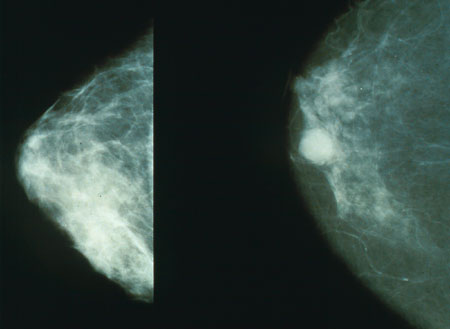
This new option uses tomosynthesis guidance to calculate 3D coordinates of a suspicious lesion in the breast, in addition to the traditional stereotactic method; allowing radiologists to accurately complete biopsy of suspicious areas to conduct a pathological examination and inform the diagnosis and care plan. Clinicians will now be able to enhance diagnostic care for patients by using Tomosynthesis Biopsy to target a lesion previously undetectable on images from full field digital mammography (FFDM) alone.
“Fujifilm is committed to empowering clinicians to detect breast cancer at its earliest stage, to help save lives through early intervention,” said Rick Banner, Senior Director of Marketing, FUJIFILM Medical Systems U.S.A., Inc. “The availability of Tomosynthesis Biopsy for the ASPIRE Cristalle with DBT, enhances our women’s health imaging toolbox which also includes S-View, Iterative Super-resolution Reconstruction (ISR), and Tomosynthesis Spot, which are all designed to help increase clinical confidence and help clinicians provide enhanced patient care.”
Clinicians can realize the following benefits when using the Tomosynthesis Biopsy in addition to Stereotactic Biopsy on the ASPIRE Cristalle with DBT mammography system:
Clinical Confidence: Clinicians will have more options to deliver enhanced diagnosis to patients. Now with Tomo Biopsy, targeting is improved by identifying the area of concern directly on the corresponding tomosynthesis slice.
Ease-of-Use: High resolution dual display system, targeting guide function on stereo images, various image processing and other useful functions designed to make targeting accurate and easy.
Increased Efficiency: Tomo Biopsy leads to a more efficient workflow with the potential to decrease exam times, as clinicians can use a single click to calculate 3D coordinates compared to targeting the same lesion on two images with Stereotactic Biopsy. By using Tomosynthesis images for targeting instead of traditional 2D clinicians are also afforded the increased diagnostic confidence that comes hand-in-hand with tomosynthesis use.
The FUJIFILM ASPIRE Cristalle with DBT combines state-of-the-art, Hexagonal Close Pattern (HCP) capture technology and intelligent image processing, optimizing dose and contrast based on individual breast composition. The result is low dose and fast acquisition of exceptional images for all breast types. In addition, patients can experience a noticeable improvement in comfort during procedures with Fujifilm’s patented, flexible comfort paddle design, which provides gentle and even compression that is designed to adapt to patient curves.
Fujifilm representatives will be presenting Tomosynthesis Biopsy at Fujifilm’s booth #1111 at the Association for Medical Imaging Management (AHRA) annual meeting from July 21-24 in Denver, Colorado.
Source: Company Press Release






